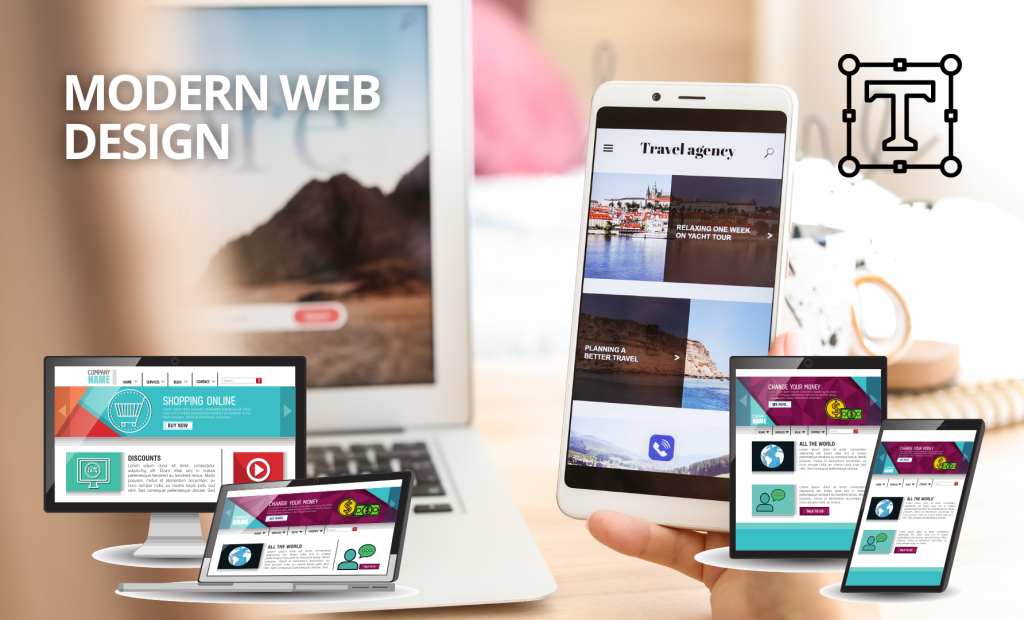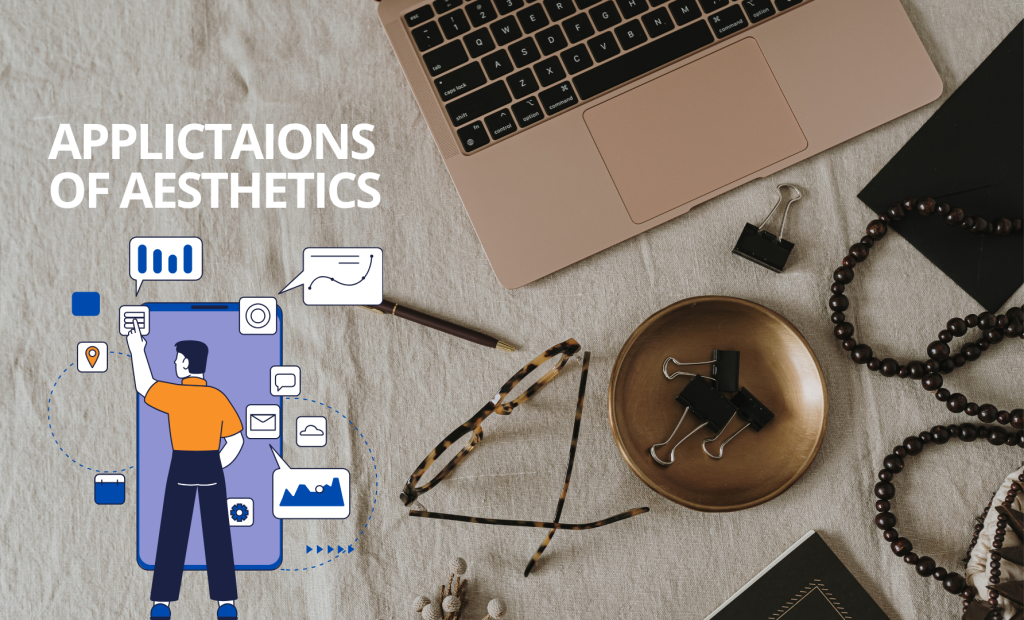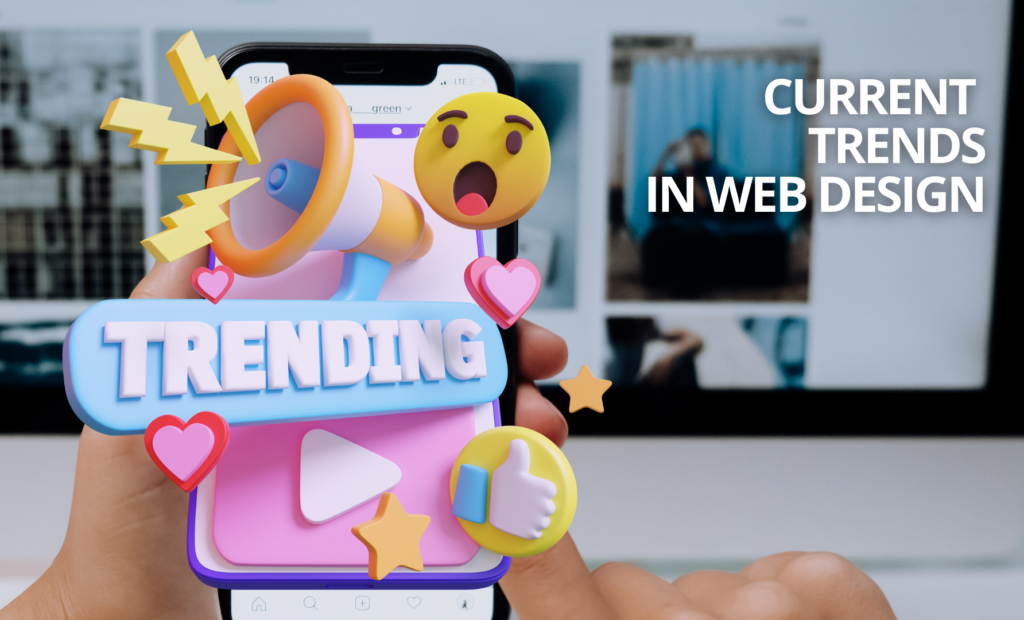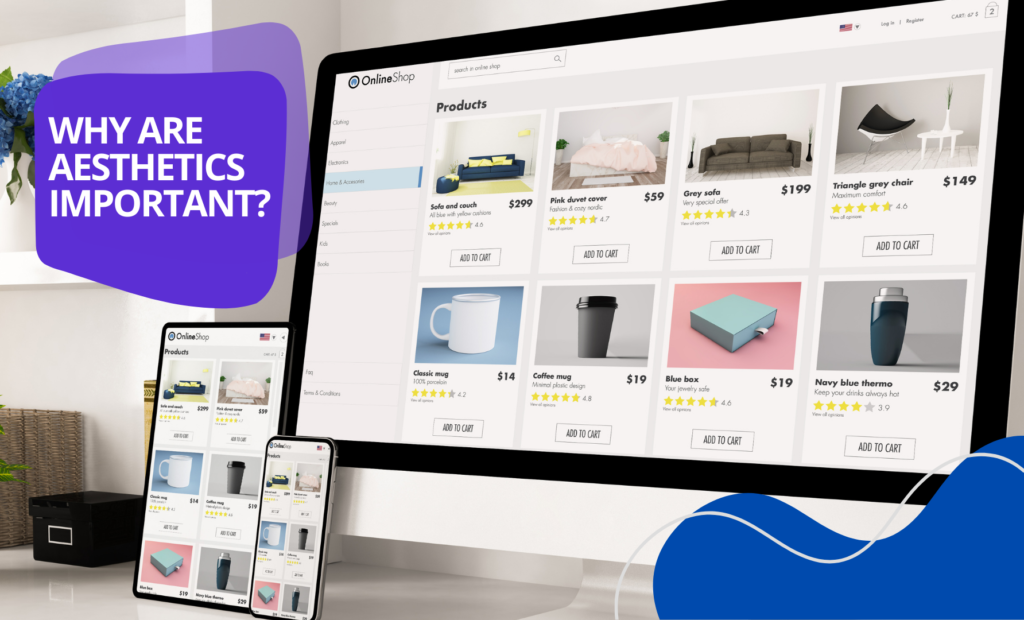
Table of Contents
ToggleAesthetic refers to the visual look of Websites, online application, or mobile app built with front-end technology. This includes many components like as menus, buttons, graphics and fonts.
Aesthetics also has interactive elements such as noises, animations, and symbols. Together, these qualities produce a user-friendly look and make an impression on the intended audience.
Modern web design uses a simple and responsive approach. It is created utilising interactive techniques to engage the user. Screens frequently use a mix of graphics, animations, and styles to make the programme appear more alive.
Why are Aesthetics important?

Traditional web design prioritised functionality above aesthetics. The extensive functionality of the technology’s back end required the common user to work harder to grasp their navigation patterns.
Modern web design addresses all of these issues by introducing new coding approaches, improved tools, and cutting-edge software development models.
Web design should be clean in look and created utilising Human-Computer Interaction Techniques to capture the audience’s attention and give value.
- Prioritise User Experience: Make your website easy to use and comprehend for visitors by using clear navigation menus.
- Adopt Minimalist Design: To improve user engagement and understanding, take a minimalist approach to web design that emphasises simplicity and clarity.
- Implement Human-Computer Interaction Techniques: Use advanced coding techniques to create a dynamic user experience that benefits your audience.

Usecase of Aesthetics in Industries

Aesthetics in Marketing and Sales
Aesthetics play an important part in online marketplaces and e-commerce platforms since they focus on the intended audience. This leads to more focused sales. Similarly, different items on websites are promoted with graphics to improve their visual appeal.
Aesthetics are useful in marketing since a good design may aid with branding. The site’s picture or logo should be eye-catching, with unambiguous positioning.
Many businesses opt to include advertisements on their websites as an extra source of revenue. Ads should appear at regular intervals between content.
Aesthetics in Customer Attraction and Conversion
Most users choose projects that provide them with the information they need. Because websites rely on databases to get information and time constraints are critical.
To preserve this relationship, responsive applications engage with the user through their website. Examples of interactive activities include % loading bars and video buffering indications.
- Implement Loading Bars: Improve the user experience by including loading bars with percentages to keep users interested while information is retrieved from databases.
- Use Buffering indicators: Keep users connected by showing buffering indicators for videos, guaranteeing smooth engagement and preventing visitors from abandoning the website due to content loading delays.
- Prioritise Responsive Design: Implement responsive design concepts to improve website interactions with users, allowing for seamless navigation increasing consumer attraction and conversion rates.
Current Aesthetic Trends in Website Design
- Using bold typeface and vibrant colours boosts user engagement, resulting in a 25% increase in website stay time.
- According to recent industry research, using interactive animations and dynamic images increases conversion rates by 30 percent.
- Research has shown that implementing smooth navigation and unambiguous calls-to-action can lower bounce rates by up to 40%, boosting overall website performance.

Features of an Aesthetic Website
Aesthetic websites integrate visual appeal and user experience to strengthen company identification and drive engagement. These websites use brilliant colours to create memorable experiences that leave an impression on visitors.
Interactive components like animations and scroll effects entice visitors to explore and participate. Furthermore, mobile optimisation guarantees smooth surfing across devices, meeting the different demands of customers accessing websites via smartphones and tablets.
- – Visual Storytelling: Aesthetic websites utilise visual storytelling tactics like captivating images and graphics to deliver brand storylines and elicit emotional reactions from viewers.
– Micro-interactions: These websites employ micro-interactions, such as hover effects and button animations, to enhance the user experience and promote further investigation.
– The design of fonts: Aesthetic websites stand out with distinctive fonts and inventive text layouts that add individuality while also improving readability.
– Panorama Scrolling: Using parallax scrolling effects adds depth and dimension to web pages, resulting in an immersive surfing experience that captures and engages people.
Popular Framework and Libraries for Modern Aesthetic Website Design
Popular Frameworks and Libraries for Modern Aesthetic Website Design provide pre-built tools and components to help ease the development process and improve the visual appeal of websites.
Using these resources enables developers to construct visually appealing and user-friendly websites quickly. Benefits include:

- Faster Development: Frameworks give pre-built components, which reduces development time and effort.
- Consistent Design: Libraries guarantee that design components are consistent throughout the website, resulting in a unified brand identity.
- Responsive Layouts: Frameworks have responsive design capabilities that ensure great viewing experiences across several devices.
- Improved User Experience: By incorporating new design trends and interactive aspects, frameworks and libraries increase user engagement and pleasure.
Conclusion
Modern web design prioritizes simplicity, responsiveness and uses interactive approaches to capture audiences. Businesses should Adopt these developments by implementing popular frameworks and libraries that ease development processes.
Businesses that prioritise aesthetics may design visually attractive websites that leave a lasting impact on their audience, resulting in increased engagement and conversion rates. Contact our Website Design Company immediately to improve your online presence with cutting-edge aesthetics and user-centric design.